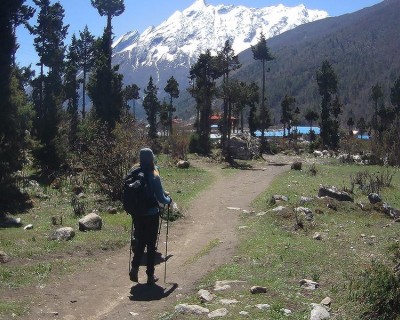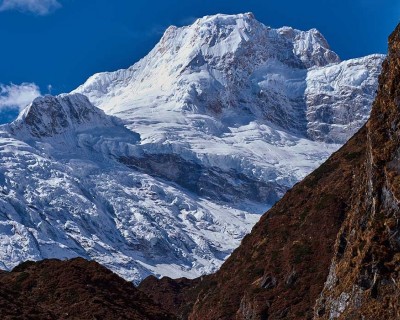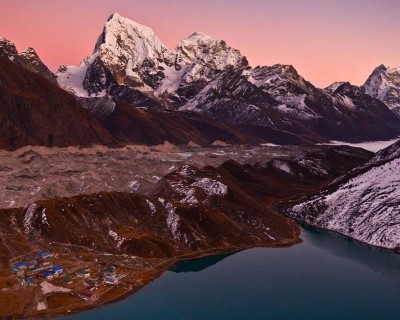Highlights of the Everest Kala Patthar trek
Here are some of the best things you can experience throughout this majestic and heartwarming trek.
- The major highlight of this trek is that you will trek to Everest Base Camp and then take a mesmerizing view of Mount Everest from the Kalapatthar viewpoint.
- Another major highlight of the Everest Kala Patthar trek is the Kala Patthar viewpoint
- The Everest Kala Patthar trek lets you walk through the Himalayas and the Sagarmatha National Park.
- You will also get to visit the Chorten, a 100-year-old Buddhist Monastery.
- You might also see several wild animals, such as the Himalayan Goat (Thar/Jharal), Musk Deer, and birds like Danphe (Lophophorus).
Preparation required for the trek
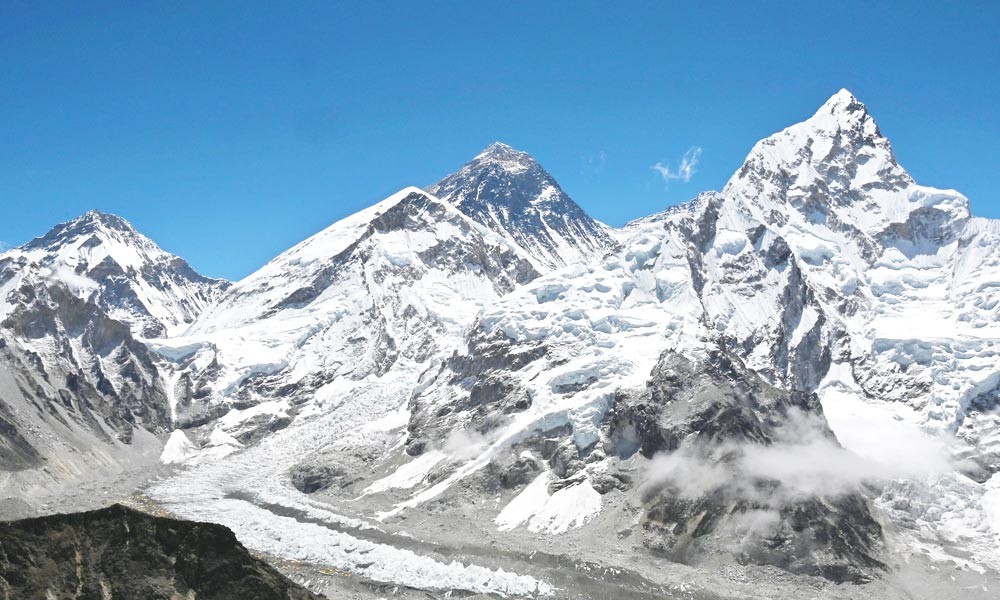 Everest Base Camp with Kala Patthar is a challenging adventure that needs proper preparation and planning. Here are a few tips that might assist the trekkers while ascending the trial and make the trek easy and hassle-free.
Everest Base Camp with Kala Patthar is a challenging adventure that needs proper preparation and planning. Here are a few tips that might assist the trekkers while ascending the trial and make the trek easy and hassle-free.
Training and Fitness
Start training yourself as soon as you get the idea of going for the Everest Kala Patthar trek. Make yourself physically and mentally strong, so you do not get into health issues throughout the trek. Running and working out is the best exercise to prepare for the Everest Kala Patthar trek.
Also, remember that Everest Base Camp is 5,364 meters (17,598 feet). From this information, you may have eventually realized how well-prepared you should be before attempting even the Everest Base Camp 12 Days Trek. As a result, we advise that all trekkers undergo a rigorous checkup before embarking on this journey. Avoid smoking, drinking alcohol, and other activities that decrease your stamina.
Furthermore, as one ascends, there are several cases of trekkers getting frostbitten, a rapid increase in heartbeat, and various other issues. If you don't feel physically or mentally able to prepare for the trek, take your time, train yourself, and return at a later date.
Hiring experienced guides and obtaining trekking permits
Whenever you think of going on treks, you should look for an experienced and authorized guide. As you can see, we have kept hiring guides and obtaining permits in the same section, and there is a reason behind it. It is because trekkers can only acquire trekking permits in Nepal if they hire a professional guide who works for a well-established trekking agency.
The professional guide will help you prepare for trekking, such as knowing the locals, safety evacuations, etc. Consequently, the first thing you should have when visiting Nepal for the Everest Base Camp trek is a professional guide and an expert local trekking company. You can contact us for the best directions, as we're committed to offering outstanding trekking to anyone who wants to participate.
Proper research on the trial
Even though you will be assisted by a professional guide, knowing the path yourself will also help you immensely. Besides, check out the places and things you will see throughout the trek. This will increase your encouragement and excitement for the EBC Kala Patthar trek.
Besides, researching the trial can also be incredibly important while planning and preparing fpr the EBC Kala Patthar trek because it helps you to identify the most critical aspects of the trial. Furthermore, researching the tour will also assist in knowing the weather condition as climate might vary in this region throughout the year.
Researching the trial can also help you plan your route and itinerary. You can identify the best routes and places to stay by studying the map and trail guides. This can assist you in making plans for your trek safely and enjoyably, ensuring you have enough time to adjust and avoid any dangers on the trail.
Best and Worst Time to go for the EBC Kala Patthar trek
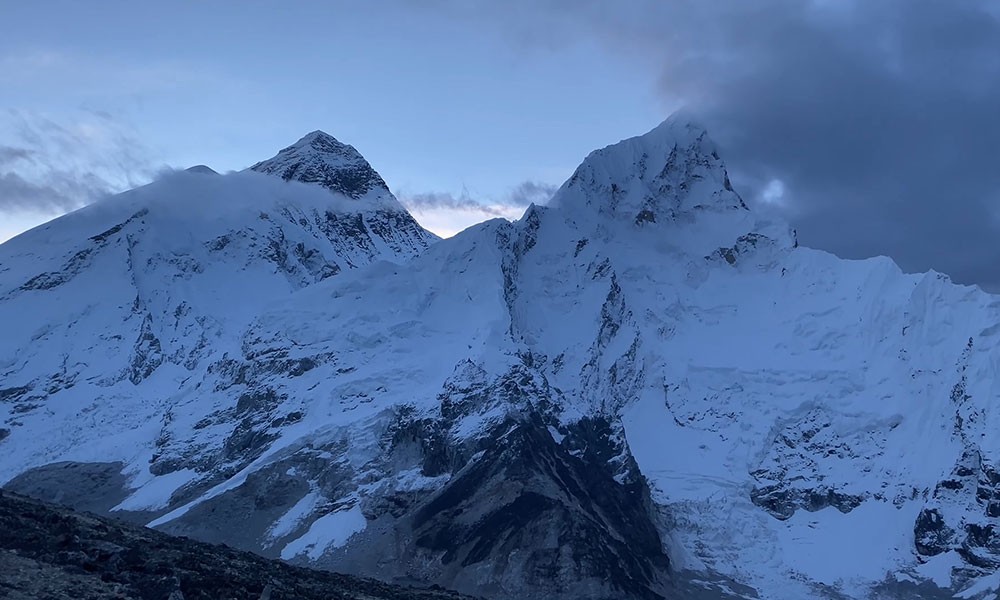 Before heading out for the Everest Kala Patthar trek, you should know the right time to go for the hike. So in this section, we will let you know the best and the worst time of the year to visit the Everest Kala Patthar Trek.
Before heading out for the Everest Kala Patthar trek, you should know the right time to go for the hike. So in this section, we will let you know the best and the worst time of the year to visit the Everest Kala Patthar Trek.
Spring and Autumn
EBC is best explored in the spring and autumn. Autumn lasts from September to November, while hotter temperatures last from March to May. Clear skies, warm days, and cool nights make these seasons ideal for trekking. In the spring, the flower initiation bushes and dandelions add a colorful touch to the walk. At the same time, the clear and bright Autumn views of the mountain peaks provide a crystal-clear picture.
Spring is also a season of new life, and the trek allows you to experience the Himalayas' rebirth. The valleys and hills are lushly green, and the winter is mild, resulting in a perfect time to explore the nearby region.
See more on: Everest Base Camp Trek in October | Everest Base Camp Trek in September |
Everest Base Camp trek in April | Everest Base Camp Trek in March
Winter and Monsoon
In contrast to the best seasons for the Everest Kala Patthar trek, winter and Monsoon are considered the worst for the walk.
Winter falls between December and February, and the temperature might drop below freezing. Therefore, there is snowfall almost every day. Because of snowfall and ice, there are also risks of trials being slippery, which makes the trek very difficult. Furthermore, the shorter daylight hours during winter make longer treks hard to accomplish. Some of the tea houses and lodges along the route may be shuttered throughout this time.
The same goes for the monsoon season. Monsoon season starts in June and ends in August. These months are characterized by heavy rainfall, high humidity, and foggy weather. As a result, the Everest Kala Patthar trek route is challenging this season. Furthermore, the trekkers might also face several other problems, such as reduced visibility which will reduce all the expectations of experiencing the majestic views you can see from the Everest Base Camp.
This blog section helps you choose the best time for the Everest Kala Patthar trek. As a trekking agency, we strongly recommend not attempting the Everest Kalapathhar trek in Monsoon and Winter seasons.
Relevant Trips you may like:
Things to Take With You
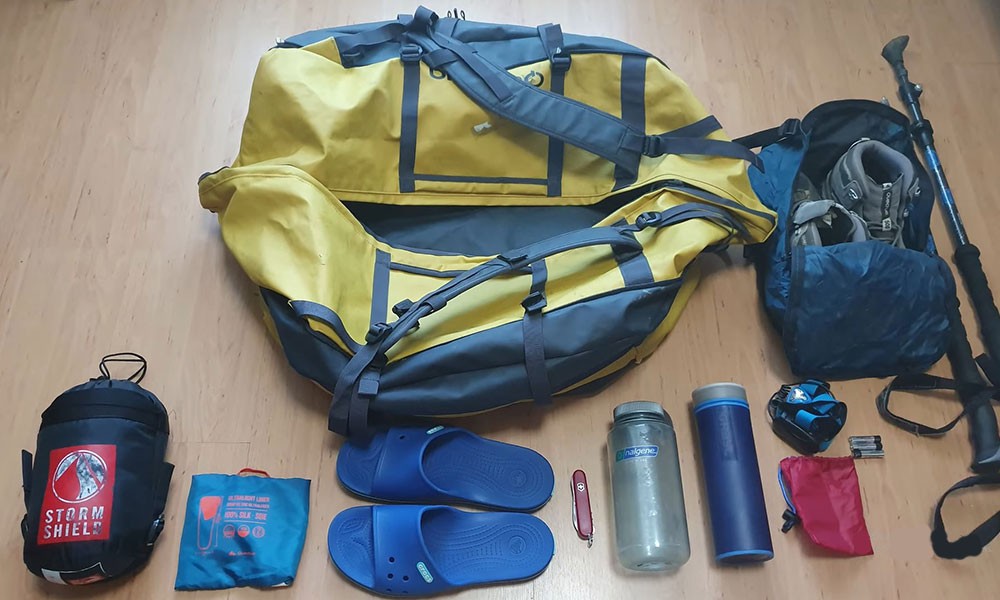 The Everest Kala Patthar trek is a challenging adventure to accomplish. Therefore, a trekker should be well prepared to finish the trek without any abruptions. The trekkers must also carry some essential gear and materials for their safety and well-being. Here are some necessary things while going for the Everest Kala Patthar trek.
The Everest Kala Patthar trek is a challenging adventure to accomplish. Therefore, a trekker should be well prepared to finish the trek without any abruptions. The trekkers must also carry some essential gear and materials for their safety and well-being. Here are some necessary things while going for the Everest Kala Patthar trek.
Backpack
Suppose you are considering attempting the Everest Kala Patthar trek. In that case, you should have a good backpack with at least 50 liters. Ensure your bag can carry all the clothes and other gear necessary for the trek. Just remember that you will need a lot of warm clothes because the weather in this region can vary as much as you ascend the trial.
Warm Clothes
Remember to carry all the essential clothes that keep you warm and protected from freezing temperatures. Some necessary clothes to carry in your backpack are fleece jackets, waterproof jackets, thermal wear, gloves, socks, and hats. Just remember that the weather condition in the Everest region is very unpredictable, so you should also be aware of the clothes you carry.
Headlamps
You will likely encounter low light conditions in the early morning and evening hours of trekking. Therefore, we recommend all trekkers carry a headlamp to make it easy to trek in the morning and evening. Headlamps also help you while going to the washrooms in the middle of the night.
Sunglasses
As you reach a high altitude, the sun's rays get brighter and brighter, which can cause significant eye strain, and these rays can also damage your eyes. Therefore, we strongly recommend that trekkers carry sunglasses with UV ray protection. These sunglasses can also save the trekkers from snow blindness, which occurs when the sun reflects off the snow and causes temporary blindness. Furthermore, these sunglasses are also helpful in making the trek more straightforward and comfortable and saving the trekker's eyes from wind and debris.
Sunscreen
One significant thing that any trekkers should know is that snow can reflect up to 80% of the sun's rays at a higher altitude. This can cause severe issues to your skin and damage your face as well. Therefore, carry sunscreens to protect your skin from harmful UV rays and sunburn. Also, remember that sunburn can lead to the risk of skin cancer.
See more on: Everest Base Camp Trek Packing List
Food and Accommodation During the Trek
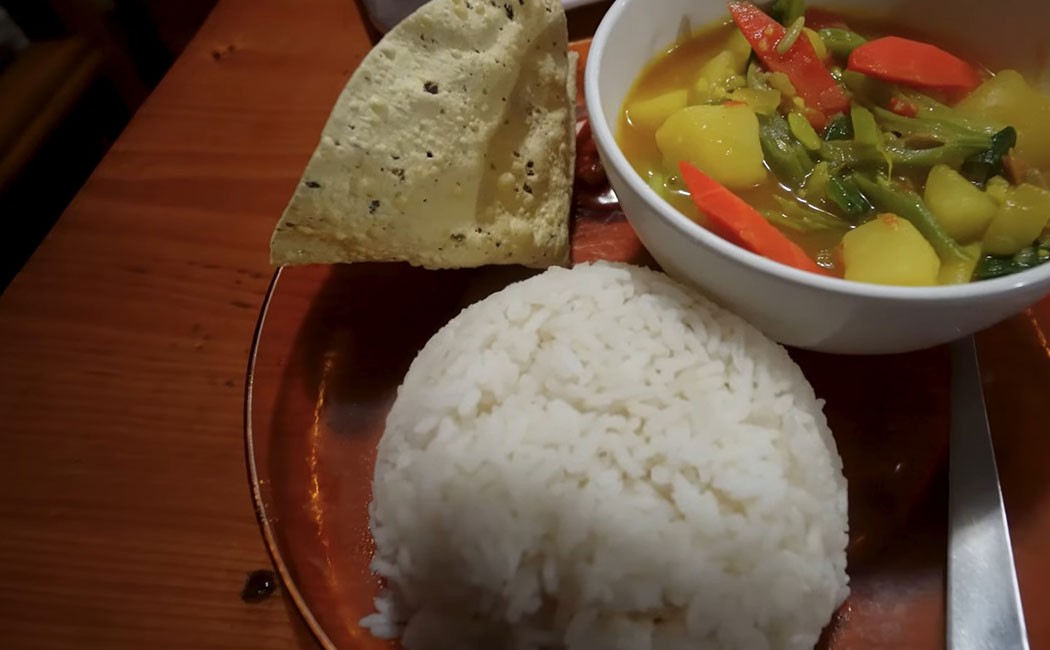 Food and accommodation can vary according to the time you choose for the Everest Kala Patthar trek. If you plan the trek in the spring and autumn, you will get high food choices and lodges.
Food and accommodation can vary according to the time you choose for the Everest Kala Patthar trek. If you plan the trek in the spring and autumn, you will get high food choices and lodges.
Local Nepalese and international cuisines will be served in almost all the lodges throughout the trek. Along the trail, numerous teahouses and lodges serve meals and beverages. Traditional Nepalese dishes such as dal bhatt, thukpa, and momos, as well as pizza and pasta, can be discovered here. Boost your energy level by eating carbohydrates, proteins, and healthy fats.
Regarding lodging, you'll stay in teahouses and lodges designed for trekkers. Beds, blankets, and hot baths are just a few amenities the teahouses provide. However, remember that your housing options become more important as you advance. Bring a sleeping bag rated at least -10°C to keep warm during the colder nights.
See more on: Everest Base camp Trek Accommodation
Detailed Itinerary of the Everest Kala Patthar trek
Day 1: Fly to Lukla's Tenzing Hillary Airport (2800m) and trek to Phakding (2610m)
Flight Duration: 35 minutes
Trek duration: 4 hours
Overnight stay in Phakding (2,610m)
You'll take off early morning for Lukla's famous Tenzing Hillary Airport. It will be a spectacular 35-minute flight as you fly over the magnificent Himalayas. After landing, you will begin your journey to Phakding. The journey starts with a descent to the Dudhkoshi River. Cheplung Village, a Sherpa village, will accompany us. You will also see Mt Khumbila, a holy mountain in the area. If you proceed to descend and follow the river, you will arrive in Phakding. The night will be in a teahouse.
Day 2: Trek to Namche Bazaar (3440m)
Trek duration: 6 hours
Overnight in Namche Bazaar (3,440m)
After breakfast, you will resume your journey by rejoining the Dudh Koshi River. You will pass under many suspension bridges and come across numerous prayer flags. At Monjo, you will enter Sagarmatha National Park. Additionally, there will be refreshing walks through the lush pine and rhododendron forest.
You will pass through Benkar, Jorsalle, and Monjo. During this trial, you will also get occasional flashes of Mt Everest. Namche Bazaar will be reached via a gradual ascent. This will take you to Namche Bazaar, a great mountain town. You'll have a fantastic evening in Namche.
Day 3: Acclimatization Day in Namche Bazaar
This day will be essential in Everest Kala Patthar Trek, as you will spend it in and around Namche Bazaar. Before trying to continue on the trek, the day is set aside for acclimatization. To make the day meaningful, you will hike to the Everest View Hotel (3,880m). The hotel is one of the best places in the region to eat and view Mt Everest. The hotel provides a great perspective on the surrounding area. After the scenic breakfast, you will descend to Namche Bazaar.
Day 4 : Trek to Tengboche (3874m)
Trek time: 6 hours
Overnight in Tengboche (3,874m)
After two evenings in Namche, it is time to depart for Tengboche. You will follow the trail that ascends from the town. Walking slowly, you will leave Namche and join a dense wood trail.
The road to Tengboche has several ups and downs. However, you will enjoy the trek as well as the views of Ama Dablam along the way. If you're lucky, you might even see some wild animals in the forest. You will arrive at Phunki Thenga village, witnessing beautiful things at every step. Following that, you will begin a gradual ascent to Tengboche. Tengboche Monastery will extend a warm welcome to you. Tengboche will provide you with a picturesque evening.
Day 5: Trek to Dingboche (4400m)
Trek duration: 5 hours
Overnight in Dingboche (4,400m)
Hearing the prayers at Tengboche Monastery will wake you to a blissful morning in Tengboche. Then you go on a tour of the monastery until breakfast time. After breakfast, you will depart for Dingboche, your next destination. The route to Dingboche takes you through Sherpa villages such as Somare and Pangboche.
As we climb higher, the vegetation becomes thinner. Only bushes will be experienced more often along the way. You will stroll through the trail, paying attention to look out for Amadablam on your right. As you approach Dingboche, several chortens, stupas, and mani walls will be noticeable. This is how you'll find Dingboche, a hamlet tucked away in the arms of the mountain ranges.
Day 6: Acclimatization Day in Dingboche
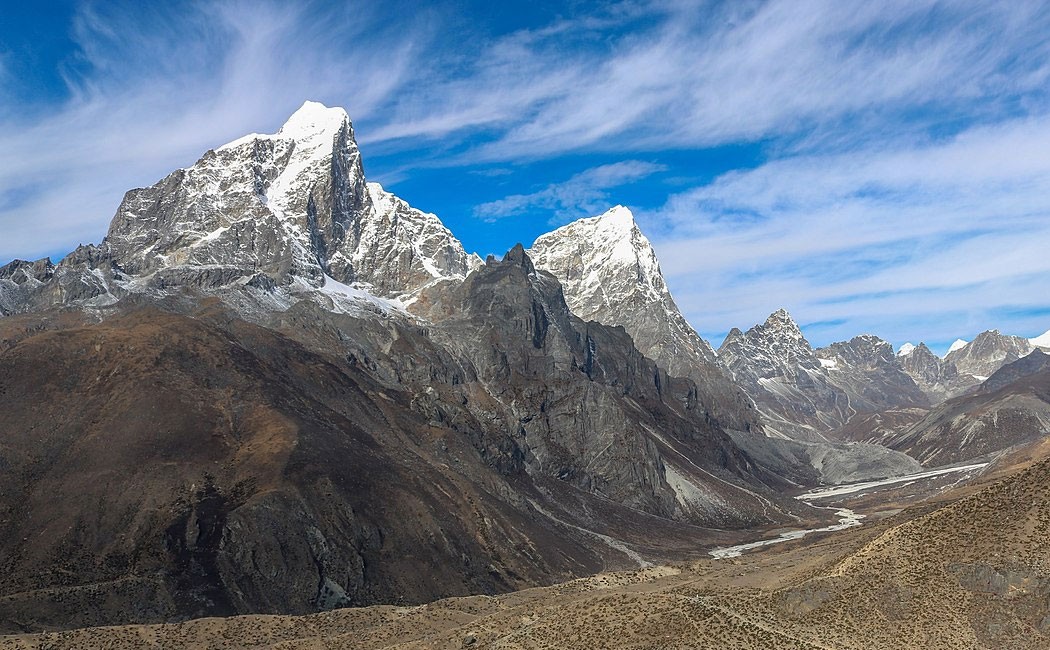 In Dingboche, you'll need to re-acclimate. In the mountain ranges, we cannot risk anything. As a result, it is beneficial to acclimate correctly. This day of rest in Dingboche will familiarize you with the area.
In Dingboche, you'll need to re-acclimate. In the mountain ranges, we cannot risk anything. As a result, it is beneficial to acclimate correctly. This day of rest in Dingboche will familiarize you with the area.
You will do a day hike to the nearest ridge, identical to your previous acclimatization day. A short uphill walk will be from Dingboche village to Nagarshan Hill (5,100m). You can take pictures of Makalu, Island Peak, Cho Oyu, and Ama Dablam from the hill. The breathtaking scenery will end up making the day memorable. After the sightseeing, you would return to Dingboche to spend the night.
Day 7: Trek to Lobuche (4940m)
Trek time: 5 hours
Overnight in Lobuche (4,930m)
You are now ready to skyrocket to new heights. After breakfast, you will depart from Dingboche on an uphill trek through the valley. From the sides, Lobuche and Toabuche Peak will protect you. You will shortly be able to walk along with the Khumbu Glacier. On terminal moraines, the hike will be simple.
Then you'll arrive at the Thukla Memorial, a memorial to mountaineers who died in the region's mountains. You'll stop and stay there to remember the souls. After an emotional pause, you will restart your walk to Lobuche. The village will be given an excellent reception.
Day 8: Trek to Gorakshep (5180) and Everest Base Camp (5364m)
Trek Time: Approximately 7-8 hours
Overnight in Gorakshep (5,185m)
In Lobuche, you'll have such an exciting morning ahead of you. It is intriguing because you will reach Everest Base Camp. After a quick breakfast, you'll go to Gorak Shep. The trek will occur on the lateral moraine of the Khumbu glacier. You'll arrive at Gorakshep after a few hours of walking and appreciating the landscapes. There are a few teahouses near the stop. You will be taken off guard.
Following the break, you will move to Everest Base Camp by leaving heavy bags in Goraskhep's teahouse. Since there aren't any teahouses at Everest Base Camp, you must return to Gorak Shep. The round-trip hike from Gorak Shep to Everest Base Camp takes 4 hours. You will arrive at the base camp to take in the breathtaking views of the area and its peaks. The site also provides views of the Khumbu Ice Fall. After a few hours of relaxing at base camp, you will return to Gorak Shep for the evening.
Day 9: Hike to Kala Patthar (5545m) and then descend to Pheriche (4200m)
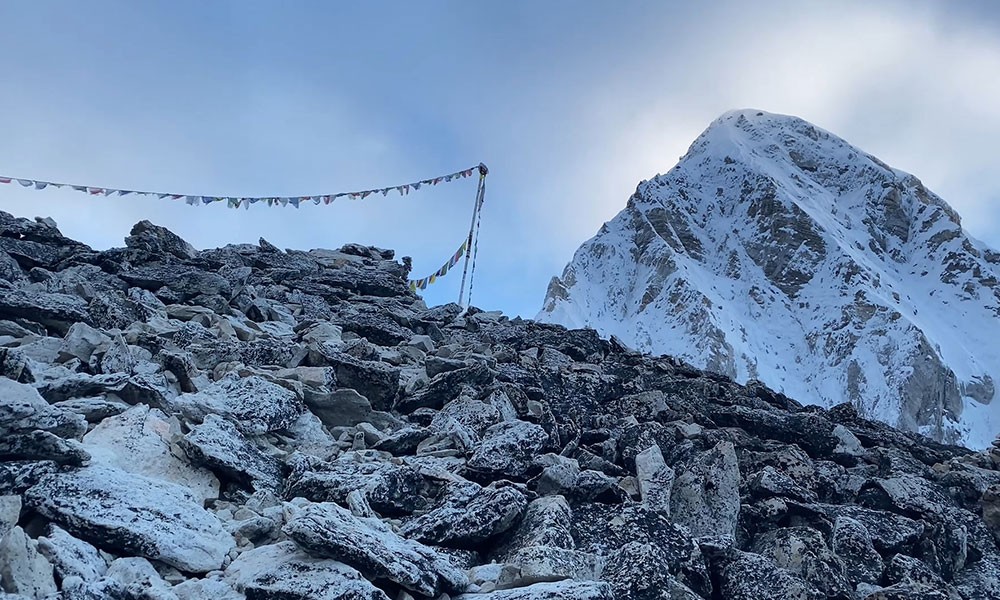 Trek Time required: 7-8 hours
Trek Time required: 7-8 hours
Overnight stay at Pheriche (4,250m)
You will have a short but rewarding hike to Kala Patthar early in the morning. When you attain Kala Patthar (5,555m), you will be treated to a stunning sunrise and mountain panorama. At the trek's maximum height, Kala Patthar, you will have a fantastic experience. Pumori, Ama Dablam, Lhotse, Everest, Makalu, and numerous other peaks will delight your eyes. Following that, you will return to Gorak Shep for breakfast. After breakfast, you will prepare for your Pheriche descent. It will be a short downhill walk to Pheriche village.
Day 10: Return to Namche
Trek Time required: 7-8 hours
Overnight: Namche (3,440m)
From Pheriche's teahouse, you'll join the trail that leads to Namche Bazaar. You will descend quickly through lush forests and downhills. The majority of the journey will take the same path. You will see fantastic things on the trail once more. The day hike is slightly longer but not particularly bad. You'll be using more slaloms. Take your time going down. You'll return to Namche Bazaar in the evening.
Day 11: Trek down to Lukla Trek for 5-6 hours
Overnight stay in Lukla (2,650m)
After another evening in Namche Bazaar, you will prepare for the Lukla trek. You must reach Lukla by strolling through Monjo, Phakding, and the Dudh Koshi River. It will be an intriguing walk through the beautiful trail. The Sagarmatha National Park's woods will also take you back to Lukla. You will finish the trekking fraction of the Everest Base Camp Trek.
Day 12: Fly back to Kathmandu
We will come back to Kathmandu early in the morning. On your way back to Kathmandu, you can enjoy breathtaking views of mountain ranges, rivers, forests, and other natural attractions. When you arrive in Kathmandu, you will be met by a private vehicle and driven to your hotel. You can spend your remaining time exploring this vibrant city. Overnight stay in Kathmandu at a hotel.
For those seeking an additional level of challenge and excitement in their Himalayan adventure, the Everest Three High Passes Trek itinerary is a fantastic choice. This trek not only encompasses the traditional Everest Base Camp route but also traverses three of the highest passes in the Everest region, providing stunning vistas and a unique experience of the region's varied landscapes.
Frequently Asked Questions (FAQ)
What is the Everest Kala Patthar trek, and how long does it take?
The Everest Kala Patthar trek is a high-altitude trek in the Himalayas that leads to Mount Everest's base camp and Kala Patthar viewpoint. The tour typically takes 12 days, with two days of acclimatization in the itinerary.
Which are the best seasons of the year to do the Everest Kala Patthar trek?
The spring and autumn seasons are perfect for the Everest Kala Patthar trek. These seasons generally have the ideal weather, with cloudless skies and mild temperatures.
What level of physical fitness is required for the Everest Kala Patthar trek?
The Everest Kala Patthar trek is a challenging trek requiring great physical fitness. Trekkers must be able to walk for 7-8 hours each day and be prepared for steep climbs and descents. A regular exercise routine that includes cardio and strength training can help you prepare for the trek.
What equipment and gear must I bring for the Everest Kala Patthar trek?
Trekkers should be prepared for cold weather and weather changes. Warm layers, a waterproof jacket, sturdy hiking boots, a backpack, and a sleeping bag are all essentials. A headlamp, sunglasses, and sunscreen are also recommended.
Do I need a guide or porter for the Kala Patthar trek to Everest?
Yes, an expert guide is required for this trek. A tour guide will assist you in navigating the trails, offer additional details on the area's culture and history, and offer any assistance in the case of an attack. A porter can carry heavy gear and equipment, making the trek more comfortable for the trekker.


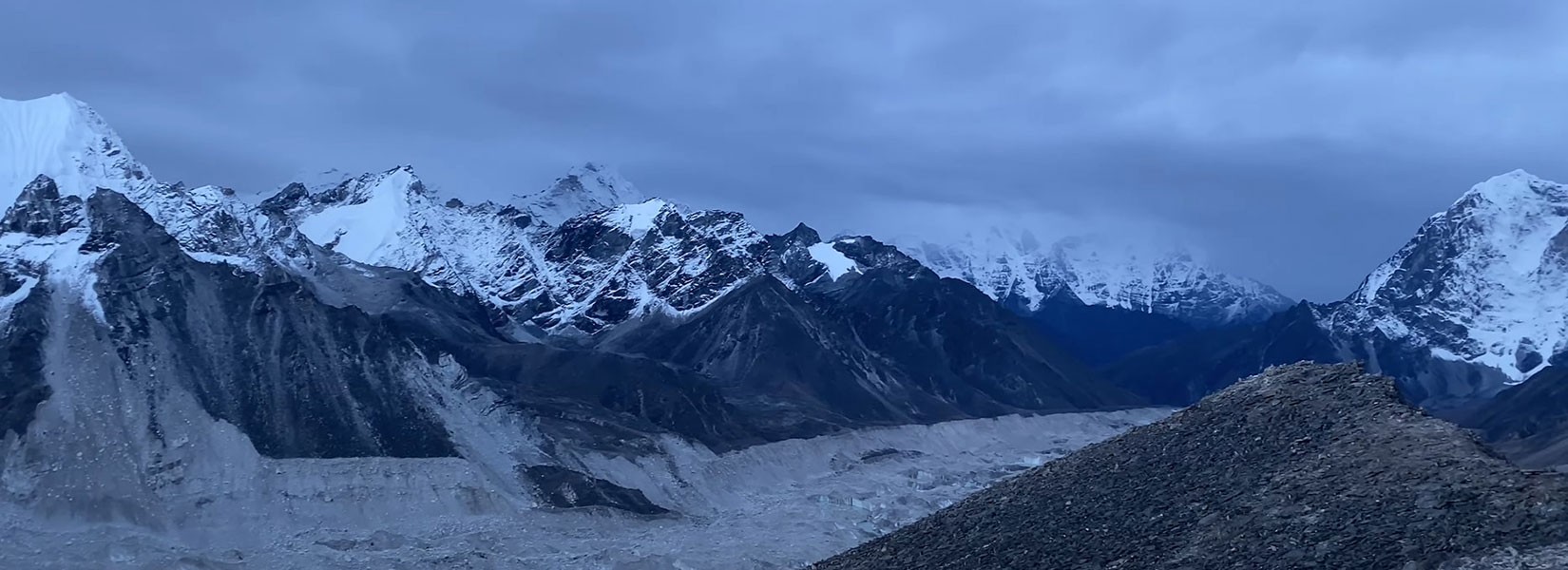

 Everest Base Camp with Kala Patthar is a challenging adventure that needs proper preparation and planning. Here are a few tips that might assist the trekkers while ascending the trial and make the trek easy and hassle-free.
Everest Base Camp with Kala Patthar is a challenging adventure that needs proper preparation and planning. Here are a few tips that might assist the trekkers while ascending the trial and make the trek easy and hassle-free. Before heading out for the Everest Kala Patthar trek, you should know the right time to go for the hike. So in this section, we will let you know the best and the worst time of the year to visit the Everest Kala Patthar Trek.
Before heading out for the Everest Kala Patthar trek, you should know the right time to go for the hike. So in this section, we will let you know the best and the worst time of the year to visit the Everest Kala Patthar Trek. The Everest Kala Patthar trek is a challenging adventure to accomplish. Therefore, a trekker should be well prepared to finish the trek without any abruptions. The trekkers must also carry some essential gear and materials for their safety and well-being. Here are some necessary things while going for the Everest Kala Patthar trek.
The Everest Kala Patthar trek is a challenging adventure to accomplish. Therefore, a trekker should be well prepared to finish the trek without any abruptions. The trekkers must also carry some essential gear and materials for their safety and well-being. Here are some necessary things while going for the Everest Kala Patthar trek. Food and accommodation can vary according to the time you choose for the Everest Kala Patthar trek. If you plan the trek in the spring and autumn, you will get high food choices and lodges.
Food and accommodation can vary according to the time you choose for the Everest Kala Patthar trek. If you plan the trek in the spring and autumn, you will get high food choices and lodges. In Dingboche, you'll need to re-acclimate. In the mountain ranges, we cannot risk anything. As a result, it is beneficial to acclimate correctly. This day of rest in Dingboche will familiarize you with the area.
In Dingboche, you'll need to re-acclimate. In the mountain ranges, we cannot risk anything. As a result, it is beneficial to acclimate correctly. This day of rest in Dingboche will familiarize you with the area. Trek Time required: 7-8 hours
Trek Time required: 7-8 hours